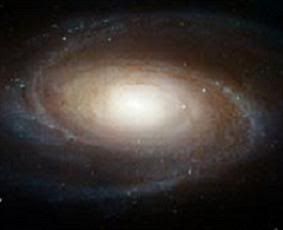|
|
Post by glactus on Nov 27, 2008 20:00:06 GMT
 The Messier 81 galaxy Messier 81 (also known as NGC 3031 or Bode's Galaxy) is a spiral about 12 million light-years away in the constellation of Ursa Major. Magnitude is 7.89 M81 is one of the most striking examples of a grand design spiral galaxy, with near perfect arms spiraling into the very center. Because of its proximity to Earth, its large size, and its active galactic nucleus (which may harbor a supermassive black hole) Messier 81 is a popular galaxy to study in professional astronomy research. The galaxy's large size and relatively low apparent magnitude (lower magnitude implies higher brightness) also make it a popular target for amateur astronomy observations. Most of the emission at infrared wavelengths originates from interstellar dust. This dust is found primarily within the galaxy's spiral arms, and it has been shown to be associated with star formation regions. The general explanation is that the hot, short-lived blue stars that are found within star formation regions are very effective at heating the dust and hence enhancing the infrared dust emission from these regions. .Only one supernova has been detected in Messier 81. The supernova, named SN 1993J, was discovered on 28 March 1993 by F. Garcia in Spain. At the time, it was the second brightest supernova observed in the twentieth century.  Credits: This is a NASA/Hubble image |
|